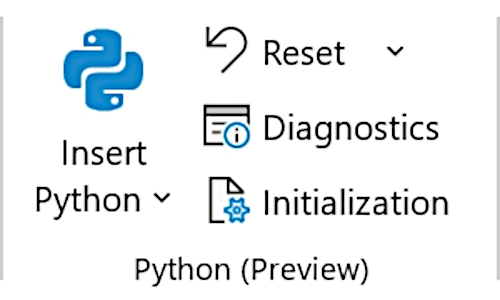4 October 2022

In this article we continue the Python Production mix series. Specifically, we build Model 7 using the PuLP library.
PuLP, like Pyomo, is a COIN-OR project. The library is freely available, the code is open source, and it is widely used.
Our objective is to compare a model built using PuLP with the same model built using Pyomo.
Articles in this series
Articles in the Python Production mix series:
- Python optimization Rosetta Stone
- Production mix - Model 1, Pyomo concrete
- Production mix - Model 2, Pyomo separate data
- Production mix - Model 3, Pyomo external data
- Production mix - Model 4, Pyomo json file
- Production mix - Model 5, Pyomo using def
- Production mix - Model 6, Pyomo abstract
- Production mix - Model 7, PuLP
- Production mix - Model 8, OR-Tools
- Production mix - Model 9, Gekko
- Production mix - Model 10, CVXPY
- Production mix - Model 11, SciPy
- Production mix - Conclusions
Download the models
The model is available on GitHub.
Formulation for Model 7
For this model, we're using the same general formulation that we used in Model 2.
Model 7 Python code
Import dependencies
The first task is to import the libraries that are needed for our program. As shown in Figure 1, we import the pulp library, which we've previously installed, along with some other libraries that we'll use.
import pulp as pu
import pandas as pd
import os.path
import jsonData file
The data for Model 7 is shown in Figure 2. We're using the json format that we used in some previous models. The only difference is that PuLP does not allow spaces in the model name, so we use underscores instead.
{
"Name": "Boutique_pottery_shop_Model_7",
"Hours": 250,
"kg": 500,
"SalesLimit": 0,
"Coefficients": {
"Discs": {"People": 12.50, "Materials": 18.00, "Sales": -2.00, "Margin": 80.00},
"Orbs": {"People": 10.00, "Materials": 30.00, "Sales": 1.00, "Margin": 200.00}
},
"VarInitial": 0,
"VarLBounds": 0,
"VarUBounds": 100,
"Engine": "cbc",
"TimeLimit": 10
}Get data
We import the data from the json file using the code shown in Figure 3. This code is the same as the code we used for previous json files, apart from the filename.
DataFilename = os.path.join('.', 'productiondata7.json')
with open(DataFilename, 'r') as f:
Data = json.load(f)Declarations
As shown in Figure 4, we declare the model as a linear program, and specify that it is a maximization problem. The data is assigned to a Model object, in a way that is similar to previous models. The syntax is simpler than we used in, for example, our Pyomo Model 5, though Pyomo offers a richer object model.
Model = pu.LpProblem(Data['Name'], pu.LpMaximize)
Model.Hours = Data['Hours']
Model.kg = Data['kg']
Model.SalesLimit = Data['SalesLimit']
Model.VarInitial = Data['VarInitial']
Model.VarLBounds = Data['VarLBounds']
Model.VarUBounds = Data['VarUBounds']
Model.Engine = Data['Engine']
Model.TimeLimit = Data['TimeLimit']
Coefficients = Data['Coefficients']
Model.Products = list(Coefficients.keys())
Model.People = {}
Model.Materials = {}
Model.Sales = {}
Model.Margin = {}
for p in Model.Products:
Model.People[p] = Coefficients[p]['People']
Model.Materials[p] = Coefficients[p]['Materials']
Model.Sales[p] = Coefficients[p]['Sales']
Model.Margin[p] = Coefficients[p]['Margin']Define the model
The model definition, as shown in Figure 5, is similar to how we defined the Pyomo Model 5 and Model 6. That is, we use def functions to define each constraint and the objective.
Like with our Pyomo models, it is not necessary to use def functions in this way. However, in more complex models, this approach gives us more control over the definitions – especially when we need to make decisions about what terms to include in a constraint or the objective function.
Note that at the end of each constraint we provide a name. This name is used in the model output.
Model.Production = pu.LpVariable.dicts("Products", Model.Products, lowBound=Model.VarLBounds, upBound=Model.VarUBounds, cat=pu.LpContinuous)
for p in Model.Products:
Model.Production[p].setInitialValue(Model.VarInitial)
def constraint_hours():
return pu.lpSum([Model.People[p] * Model.Production[p] for p in Model.Products]) <= Model.Hours, 'PeopleHours'
Model += constraint_hours()
def constraint_usage():
return pu.lpSum([Model.Materials[p] * Model.Production[p] for p in Model.Products]) <= Model.kg, 'MaterialUsage'
Model += constraint_usage()
def constraint_sales():
return pu.lpSum([Model.Sales[p] * Model.Production[p] for p in Model.Products]) <= Model.SalesLimit, 'SalesRelationship'
Model += constraint_sales()
def objective_margin():
return pu.lpSum([Model.Margin[p] * Model.Production[p] for p in Model.Products])
Model.setObjective(objective_margin())Solve model
As shown in Figure 6, we define options specific to a solver – in this case, a time limt (in seconds) for either CBC or GLPK. We then solve the model and record the solve status.
if Model.Engine == 'cbc':
Solver = pu.PULP_CBC_CMD(timeLimit = Model.TimeLimit)
elif Model.Engine == 'glpk':
Solver = pu.GLPK_CMD(timeLimit = Model.TimeLimit)
Status = Model.solve(Solver)Process results
The code for processing the solver result, as shown in Figure 7, is similar to the code for Model 6 except that we've simpiflied it to only write a solution if the solver status is optimal.
Note that the Status we recorded above is an integer. We could use that value to process the results. Alternatively, as we do below, we can ask PuLP to provide a text status, such as "Optimal".
WriteSolution = False
Optimal = False
Condition = pu.LpStatus[Model.status]
if Condition == 'Optimal':
Optimal = True
WriteSolution = TrueWrite output
The code for writing the output, as shown in Figure 8, is very similar to our previous models.
print(Model.name, '\n')
print('Status:', pu.LpStatus[Model.status])
print('Solver:', Model.Engine, '\n')
if WriteSolution:
print(f"Total margin = ${Model.objective.value():,.2f}\n")
pd.options.display.float_format = "{:,.4f}".format
ProductResults = pd.DataFrame()
for p in Model.Products:
ProductResults.loc[p, 'Production'] = pu.value(Model.Production[p])
display(ProductResults)
ConstraintStatus = pd.DataFrame(columns=['Slack', 'Dual'])
for name, c in list(Model.constraints.items()):
ConstraintStatus.loc[name] = [c.slack, c.pi]
display(ConstraintStatus)
else:
print('No solution loaded\n')
print('Model:')
print(Model)When we find an optimal solution, the output is shown in Figure 9. This output is similar to previous models, except for the model name and the slack values are defined in only one direction.
Boutique_pottery_shop_Model_7
Status: Optimal
Solver: cbc
Total margin = $3,076.92
Production
Discs 6.4103
Orbs 12.8205
Slack Dual
PeopleHours 41.6667 -0.0000
MaterialUsage -0.0000 6.1538
SalesRelationship -0.0000 15.3846
Evaluation of this model
There is a close similarity between this PuLP model and our Pyomo models. Although the syntax of the two libraries is somewhat different, the general structure of the model definitions and solution process is familiar. This isn't surprising, as both PuLP and Pyomo are COIN-OR projects.
Despite the similarities, we tend to prefer Pyomo simply because PuLP offers no significant advantages, while Pyomo provides easier access to a wider range of solvers – enabling us to solve a greater variety of model types.
Next steps
In subsequent articles we'll repeat the model implementation using our other selected libraries. Next on the list is OR-Tools, which takes quite a different approach to this type of modelling.
Conclusion
In this article we built the Production mix model using the PuLP library. Compared with the Pyomo models, the code is quite similar. PuLP is a capable modelling library that is easy to use. However, since it offers no significant advantage compared with Pyomo, we tend to prefer Pyomo over PuLP.
In the next article, we'll build the Production mix model using OR-Tools.
If you would like to know more about this model, or you want help with your own models, then please contact us.












